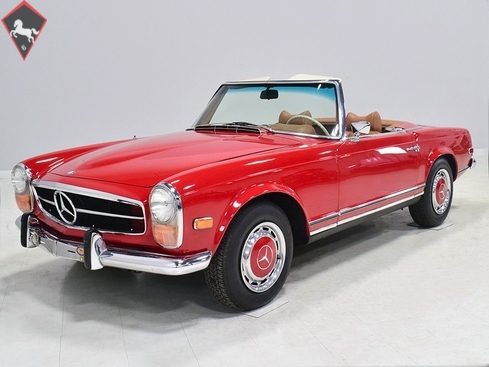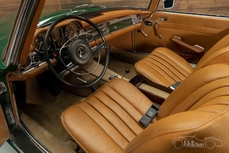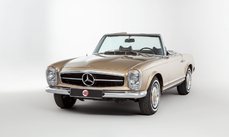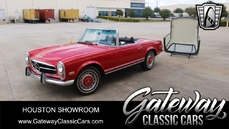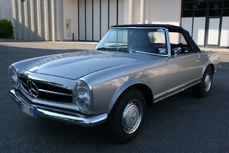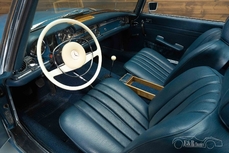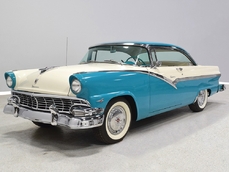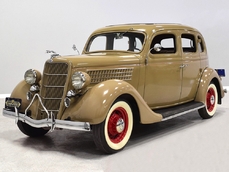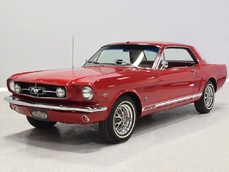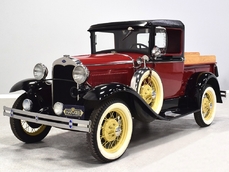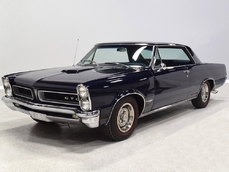Mercedes-Benz 280SL w113 2.8 liter inline-6 1969
General description :
It’s probably safe at this point to call Mercedes-Benz’s SL a legend. No other car embodies the two sides of Mercedes-Benz’s philosophy (performance and luxury) better, and with each successive generation, the SL improved on both aspects of its personality. For many, the W113 “Pagoda” SL represents the ideal combination of quality, performance, luxury, and all-around usability, and it’s hard to argue with that opinion. The Pagoda is beautiful to look at, bulletproof reliable, joyous to drive on challenging roads, yet it coddles its occupants like few other 2-seat convertibles of the period. Skyrocketing values are a result of two factors: the earlier 300SL is a seven-figure car and the Pagoda is a fantastic automobile in its own right. This 1969 Mercedes-Benz 280SL is a 50-year-old hobby car that can still be used every single day without feeling like you’re giving up comfort, convenience, or practicality. I can think of few other cars that can make that same claim.
This brilliant Signal Red SL has been in the same family for more than two decades and was treated to a cost-no-object restoration in the early 2000s. Subsequent to that, it won several national awards, including the AACA badges still visible on the front bumper. Standards have changed since then and it probably isn’t a 100-point show car today, but at the same time, it’s easily the finest Pagoda we’ve had in our inventory. Checking the fender tag, you will note that this car was originally code 423 Tobacco Brown, and we have photos from prior to the restoration when it was white, so it has been painted at least twice. The restoration corrected any imperfections in the sheetmetal and stripped it bare so that the Signal Red on the car today looks fantastic and reaches into all the nooks and crannies of the car. This was not an inexpensive respray, but a comprehensive restoration that started and ended with a complete car and is well documented in photos. The usual trouble spots like the rockers, rear valence above the exhaust outlets, and lower front fenders are all in excellent condition with no signs of trouble or botched workmanship. However, because the restoration was finished in 2004, the notches on the headlights and spot welds on the inner fenders were filled and smoothed, which was typical of the period. It does not mean this car was in a head-on collision with a truck; it simply means that when this was a $25,000 car with a $100,000 restoration, restorers treated these details as defects to be corrected rather than symbols of absolute authenticity. This is not a patched-together wreck but a very high-quality car.
The interior was likewise changed to tan in order to better contrast with the Signal Red paint, and we can’t argue with the choice. Virtually everything inside the car was new at the time of the restoration and shows very, very few signs of use today. Correct interior components from Bud’s Benz give it a very well-finished look and it all fits beautifully thanks to expert installation. The seats are firm and comfortable in the best German tradition, the ivory-colored steering wheel is beautiful, and even the wood atop the dash was fully refinished. You will note this car carries its original Becker Europa AM/FM radio as well as the Frigiking air-conditioner underneath, both of which are operational. All the gauges spring to life when you turn the key and only the clock seems to be inoperable. The 426 option code on the body tag indicates both power steering and a 4-speed automatic transmission, and the combination of A/C, power steering, and an automatic gearbox makes this SL a car you can still drive every day without feeling like you’re compromising. Extensive sound-deadening and insulation was added under the carpets to help this Pagoda feel quiet and comfortable and like all W113s, the structure is incredibly robust. Overhead there’s a beautiful tan canvas convertible top that fits superbly (we suspect we were the first ones to actually fold it into the well) and it includes the original hardtop, which is still white from that older repaint. The hardtop remains in very good condition but perhaps could use new weather seals on the windshield header.
We have detailed photos showing the 2.8 liter inline-6 being rebuilt during the restoration and it runs superbly today. We have every reason to believe this is the car’s original, numbers-matching engine and there’s a data card on order that will verify the information. It is neatly detailed and obviously, with its show wins, remains quite correct. It starts easily and runs quite well and you’ll find the performance enthusiastic and the sounds it makes are joyous. There’s a wonderful mechanical whirring from under the hood and the engine always feels like it’s on its toes, never seeming to run out of breath. It’s torquey, which is why they bumped displacement to 2.8 liters, and when combined with the quick-witted automatic transmission, it makes for a traveling partner that seems to respond to your inputs as quickly as you think of them. It also feels far more modern than a 50-year-old machine should and you’ll learn to trust the robust inline-six to keep you out of trouble on today’s roads. A 280SL is never a rolling road block like some of its contemporaries.
The aforementioned 4-speed automatic transmission is well-matched to the engine and while it’s not quite as smooth as a modern automatic gearbox, it feels precise in its actions and that’s the whole point. The SL wasn’t necessarily about pure isolation, but the way it goes about its business feels like an expensive precision machine. The suspension is incredibly supple and competent—there’s a broken patch of pavement and a set of railroad tracks near our shop and this SL just erases all that; it’s better, in fact, than my late-model Cadillac. Very impressive. 4-wheel disc brakes were standard equipment and the optional power steering on this car means that it’s user-friendly in any environment and with any driver behind the wheel. It’s nicely weighted and quite precise. There’s also a stainless steel exhaust system that gives it a wonderful baritone exhaust note. And while the Pagoda is notorious for rusting in the most demonic ways possible, this one retains all its original sheetmetal and you can easily see that the floors are clean, the rockers are excellent, and even the area below the rear bumper—a familiar spot for rust—is in excellent condition with no issues. It sits on steel wheels with color-matched hubcaps and 185/75/14 Goodyear radials with lots of life left in them.
Documentation is extensive, including a photo album of restoration photos and details on the awards this car has won. Those awards include:
• 1st place, Stan Hywet, 2003
• 2nd place, AACA Northern Chapter, 2003
• 1st place, MBCA Western Reserve, 2003
• 1st place, Stan Hywet, 2004
• 3rd place, MBCA National Meet, 2004
• 1st Place AACA Northern Chapter, 2004
• First Junior, AACA National Meet, 2004
• 1st place, MBCA Western Reserve, 2004
• 1st place, Stan Hywet, 2005
• Senior Award, AACA National Meet, 2005
• 1st place, MBCA Western Reserve, 2005
• Preservation Award, AACA National Meet, 2005
• Grand National First Prize, AACA National Meet, 2006
• 1st place, Stan Hywet, 2006
• Senior Grand National First Prize, AACA National Meet, 2007
This is an extremely high-quality SL and prices continue to march upwards with no end in sight. The driving experience is worth the price of admission and finding a car restored to this level is always a smarter choice than trying to upgrade an inferior car. Nicely sorted, great colors, and a strong pedigree make this a fine choice for the enthusiast who is ready to enjoy the good life. Call today!
http://www.harwoodmotors.com/vehicles/inventory_details.php?id=1035
1969 Mercedes-Benz 280SL w113 2.8 liter inline-6 is listed sold on ClassicDigest in Macedonia by for $99900.
Car Facts
Car type : Car Make : Mercedes-Benz Model : 280SL w113 Model Version : 2.8 liter inline-6 Engine size : 2.8 Model Year : 1969 Location : Ohio
Sold
Seller Information
Sold
People who viewed this Mercedes-Benz 280SL w113 also viewed similar Mercedes-Benz listed at ClassicDigest
Other cars listed for sale by this dealer
About Mercedes-Benz
In the annals of automotive history, the journey of Mercedes-Benz is a tale that unfolds with the ingenuity of its founding pioneers. In the year 1886, Karl Benz crafted the Benz Patent Motorwagen, a creation that would go down in history as the world's inaugural automobile. Unbeknownst to him, this moment marked the genesis of what would evolve into the most illustrious premium car manufacturer globally. The financial underpinning of this pioneering venture, interestingly, was provided by Karl Benz's wife, Bertha Benz, demonstrating a remarkable partnership that would set the tone for Mercedes-Benz's legacy.A parallel narrative emerged not far away, as Daimler-Motoren-Gesellschaft, founded by Gottlieb Daimler and Wilhelm Maybach, entered the scene. In 1901, they unveiled their automobile under the now-famous moniker "Mercedes," meaning "godsend" in Spanish. This name was bestowed upon the car at the behest of Emil Jellinek's daughter, the distributor for Daimler-Motoren-Gesellschaft. The wheels of innovation were set in motion.
Fast forward to 1926, a pivotal year that witnessed the merger of Daimler with Benz & Cie., culminating in the birth of Daimler-Benz. The amalgamation saw the adoption of "Mercedes-Benz" as the distinguished trademark for their automobiles, fusing the legacies of two visionary entities into one.
Contrary to perceptions of conservatism, the trajectory of Daimler-Benz unfolds as a chronicle of industry firsts. From the introduction of the honeycomb radiator to the float carburetor, and the pioneering implementation of four-wheel brakes in 1924, Daimler-Benz consistently pushed the boundaries of automotive innovation. The diesel-powered Mercedes-Benz 260 D in 1936 marked the inception of diesel engines in passenger cars. The iconic Mercedes-Benz 300SL Gullwing made history as the first car with direct fuel injection, albeit the Gutbrod's tiny 2-stroke engine can claim precedence.
Safety innovations became a hallmark, with Béla Barényi's patented safety cell design in the "Ponton"-models in 1951, featuring front and rear crumple zones. The W116 450SEL 6.9 saw the introduction of the Anti-Lock Brake system (ABS), another pioneering safety feature. From the first production airbags and beyond, the legacy of "firsts" continued to be etched into the fabric of Daimler-Benz.
Over its centennial journey, Mercedes-Benz has not merely produced cars but has sculpted automotive icons. The SSKL, 710 SSK Trossi Roadster, 770K Grosser, 540K Spezial Roadster, 300SL Gullwing, w100 600 Pullman, w111 280SE 3.5 Flachkühler, w113 230SL Pagoda, w109 300 SEL 6.3, and w201 2.3-16 Cosworth stand testament to the brand's commitment to engineering excellence.
The roaring Silver Arrows, or "Silberpfeile," including the W 25, W 125, W154, W165, and W196, created a legacy of dominance on the racetrack. These machines were not merely cars; they were expressions of precision, speed, and an indomitable spirit that left their competitors in the dust.
As Mercedes-Benz marches into the future, it does so not just as an automaker but as a custodian of a legacy, a torchbearer of innovation, and a beacon of automotive excellence. The road ahead is sure to witness the continued fusion of cutting-edge technology, timeless design, and an unwavering commitment to setting new standards in the world of automobiles.
One luminary figure who left an indelible mark was Béla Barényi, often heralded as the "father of passive safety" for his pioneering work in safety engineering. His patented safety cell design, featuring front and rear crumple zones, became a hallmark of Mercedes-Benz's commitment to occupant safety, setting new standards that reverberated throughout the automotive world.
Moving through the chronicles, the collaborative genius of Wilhelm Maybach, alongside Gottlieb Daimler, laid the foundation for Daimler-Motoren-Gesellschaft. Their innovations not only birthed the first Mercedes but established a culture of relentless pursuit of technological excellence that remains integral to Mercedes-Benz's DNA.
In the post-merger era of 1926, Ferdinand Porsche emerged as a prominent figure within Mercedes-Benz. His work on the Mercedes-Benz S-Type, a supercharged race car, garnered acclaim and set the stage for a legacy that extended far beyond the marque. Porsche's impact would later extend to his eponymous company, but his influence at Mercedes-Benz during those formative years was pivotal.
As the 20th century progressed, the legendary Rudolf Uhlenhaut emerged as a key figure. Uhlenhaut, an accomplished engineer and the driving force behind the iconic Silver Arrows, played a crucial role in Mercedes-Benz's dominance in motorsports. His engineering prowess and attention to detail were instrumental in creating some of the most formidable racing cars of the era.
In the latter half of the century, figures like Bruno Sacco, the head of design at Mercedes-Benz from 1975 to 1999, left an indelible imprint on the brand's aesthetic identity. Sacco's design philosophy, characterized by clean lines and timeless elegance, shaped iconic models like the W126 S-Class and the W201 190E, solidifying Mercedes-Benz's reputation for luxury and sophistication.
The narrative would be incomplete without acknowledging the contributions of engineers like Hans Scherenberg, whose leadership in the 1970s ushered in a new era of technological innovation at Mercedes-Benz. Scherenberg's tenure saw the development of groundbreaking technologies, including the Anti-Lock Brake system (ABS) and the introduction of airbags in production cars.
